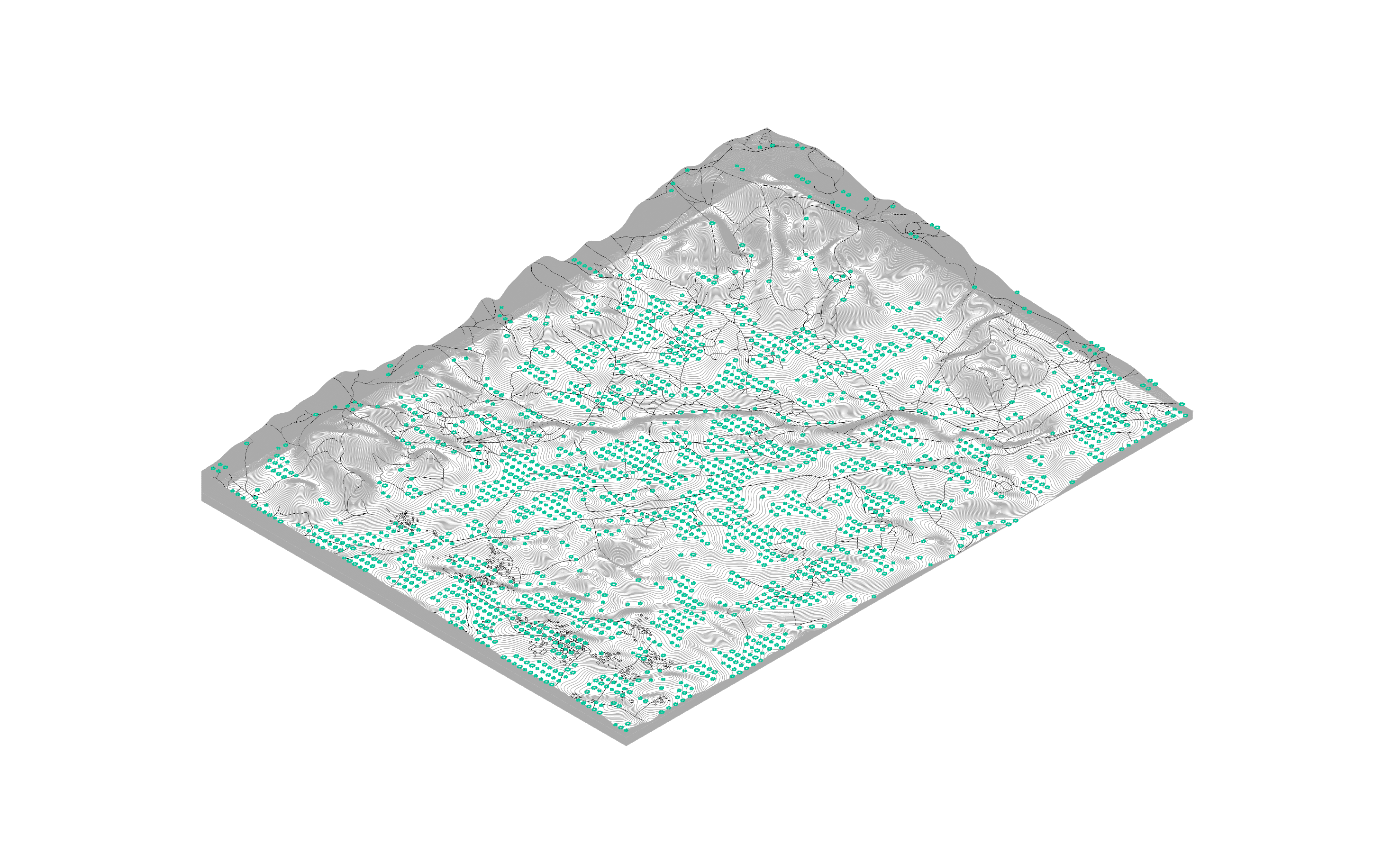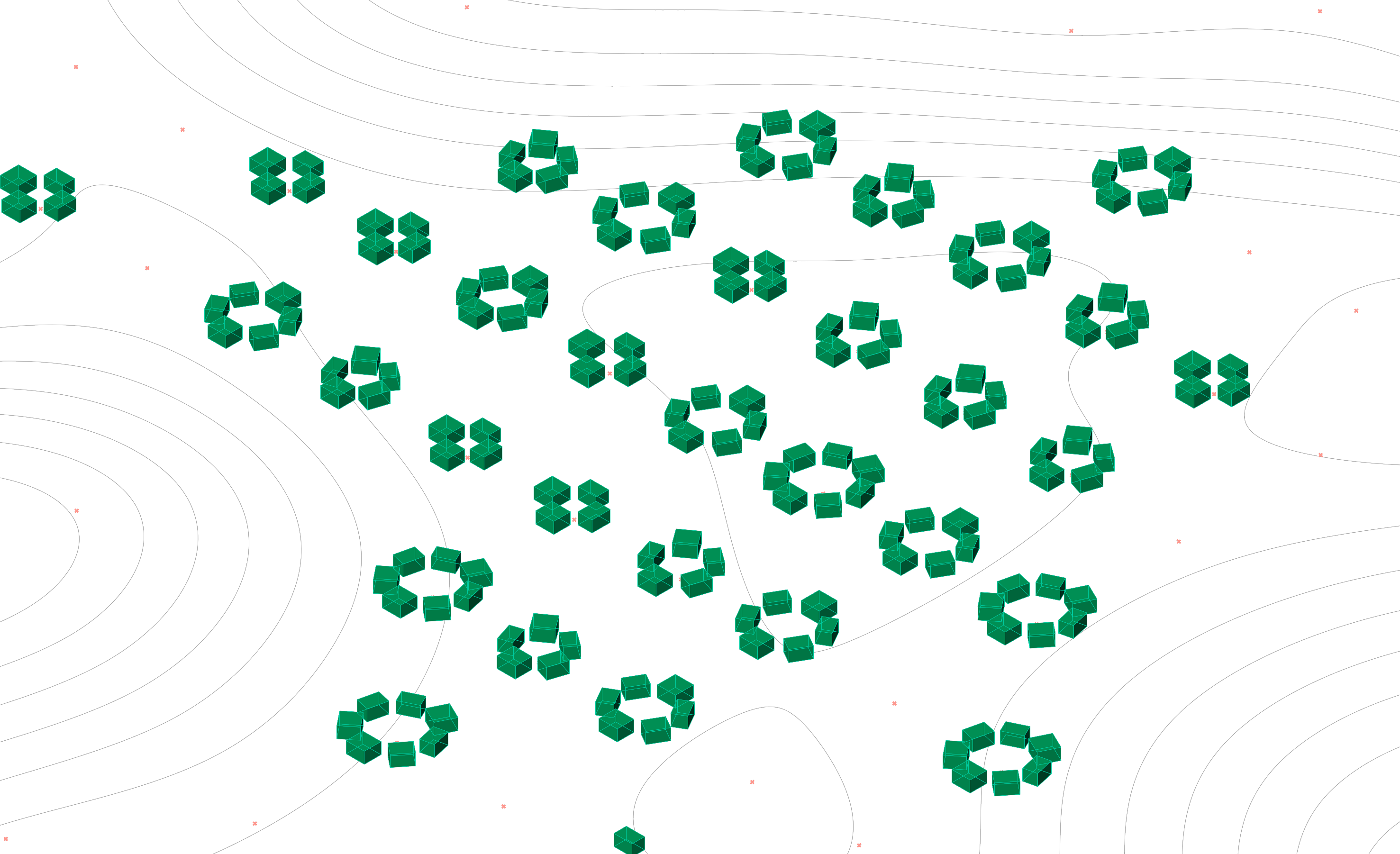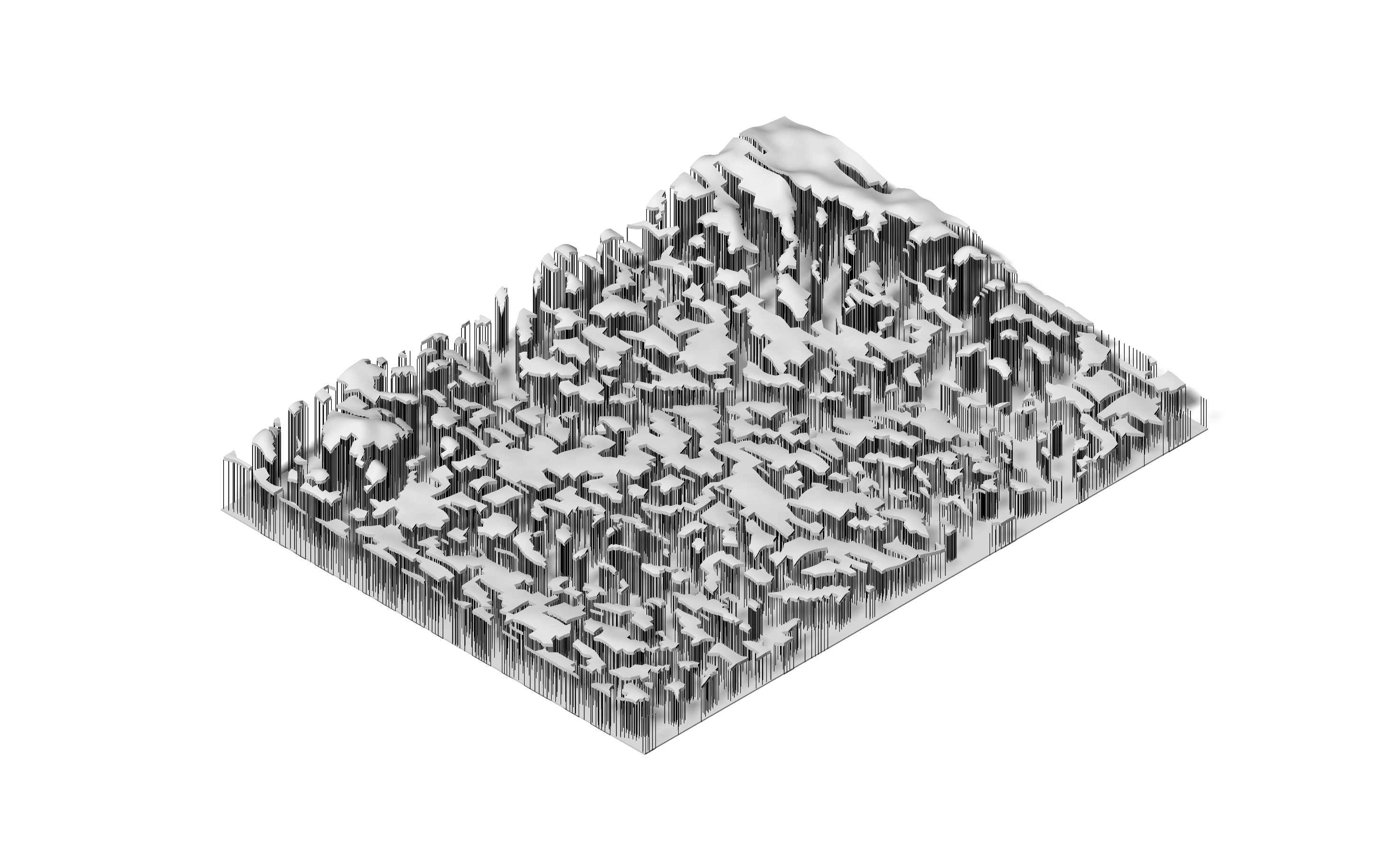Parametric Settlement
A Predictive Code for Bedouin Villages

This project integrates traditional Bedouin spatial codes into a computational tool to explore urban planning alternatives for the Al Bawadi housing project. Leveraging Grasshopper, the algorithm analyzes whether traditional Bedouin settlement densities can accommodate the same number of residential units proposed in Al Bawadi, a modern, planned urban center with 4,100 apartments. Drawing on codified cultural rules, such as clustering by hamula (extended families) and respecting public/private boundaries, the project begins to bridge traditional settlement logic with contemporary urban frameworks.
The tool models these dynamics within a Rhino/Grasshopper environment, simulating Bedouin village patterns through proximity to natural features (topography and riverbeds), cultural clustering principles, and environmental constraints. It aims to challenge perceptions of Bedouin settlements as "informal" by showcasing their inherent spatial logic.

